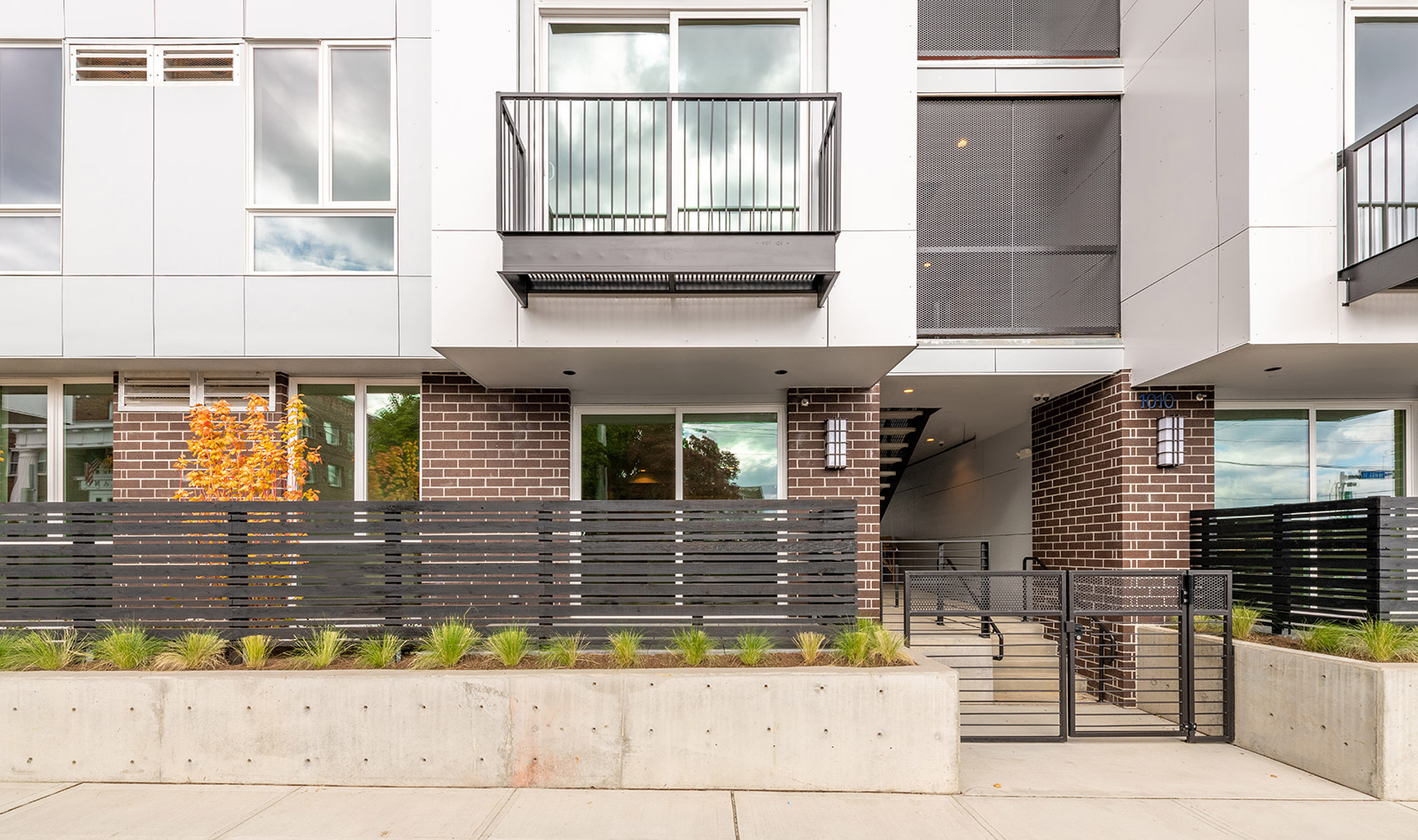
[Images by BUILD LLC]
The inclusion of garden style units in walk-up apartment buildings have not only become extremely popular in the Pacific Northwest, but this building type has also exceeded the proof of concept for construction pricing and a project’s pro forma. Before we get into the design strategies and code mechanics, however, let’s better define a few things.
Garden Units are ground floor apartments within smaller scale, low-rise apartment buildings. These units have direct access to a garden, terrace, or common area. In Europe, garden apartments more often open onto a community landscape area, whereas in America, garden apartments typically open onto a smaller private yard, courtyard, or terrace.
Walk-ups are multi-family buildings of multiple levels that eliminate an elevator and use stairs exclusively for vertical circulation.
Garden unit architectures pair particularly well with walk-up buildings for several reasons that are explained further below. Developers and investors are particularly keen with the combination because the scale fits into a smaller, more nimble project value, which in our current banking climate carries less risk and can be easier to finance. Tenants enjoy the combination because it keeps rents reasonable while maintaining a higher standard of living. BUILD has compiled 7 design strategies for garden unit walkup architectures, and we’ll be using two recently completed projects as examples:1010 Burwell Apartments in Bremerton, WA, and Juniper Flats in Seattle’s Ballard neighborhood.
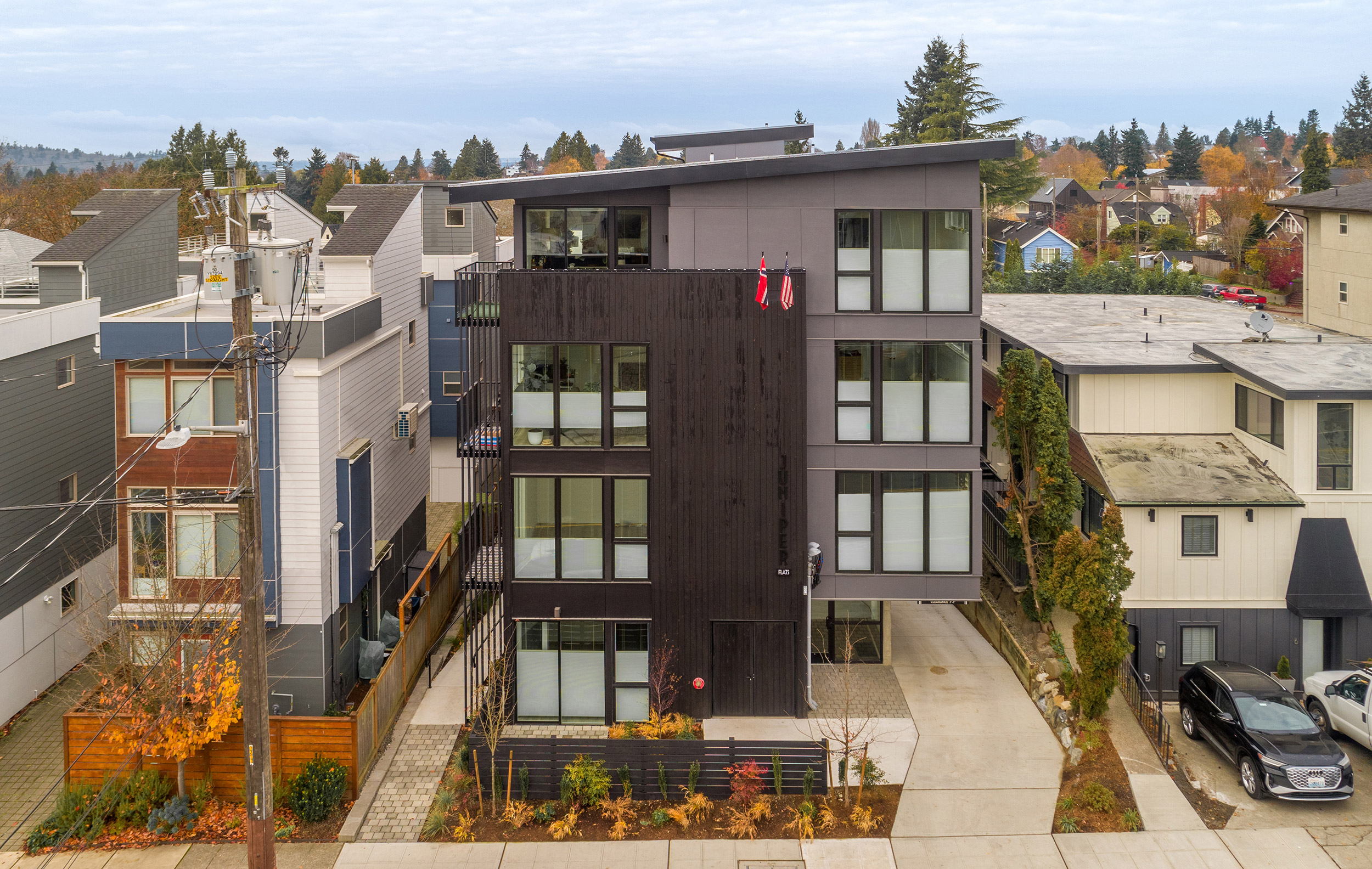
Design the garden apartments as accessible (ADA) units. Establishing a certain percentage of accessible units is mandatory in any multi-family building, and these unit types have their own set of thoughtful considerations, dimensional requirements, detailing, and specifications. Much of this careful design pairs well with garden units, as these ground floor flats typically offer multiple points of entry. A secondary door to a garden or terrace offers accessible outdoor access, in addition to the possibility of a supplementary accessible point of entry to the unit.
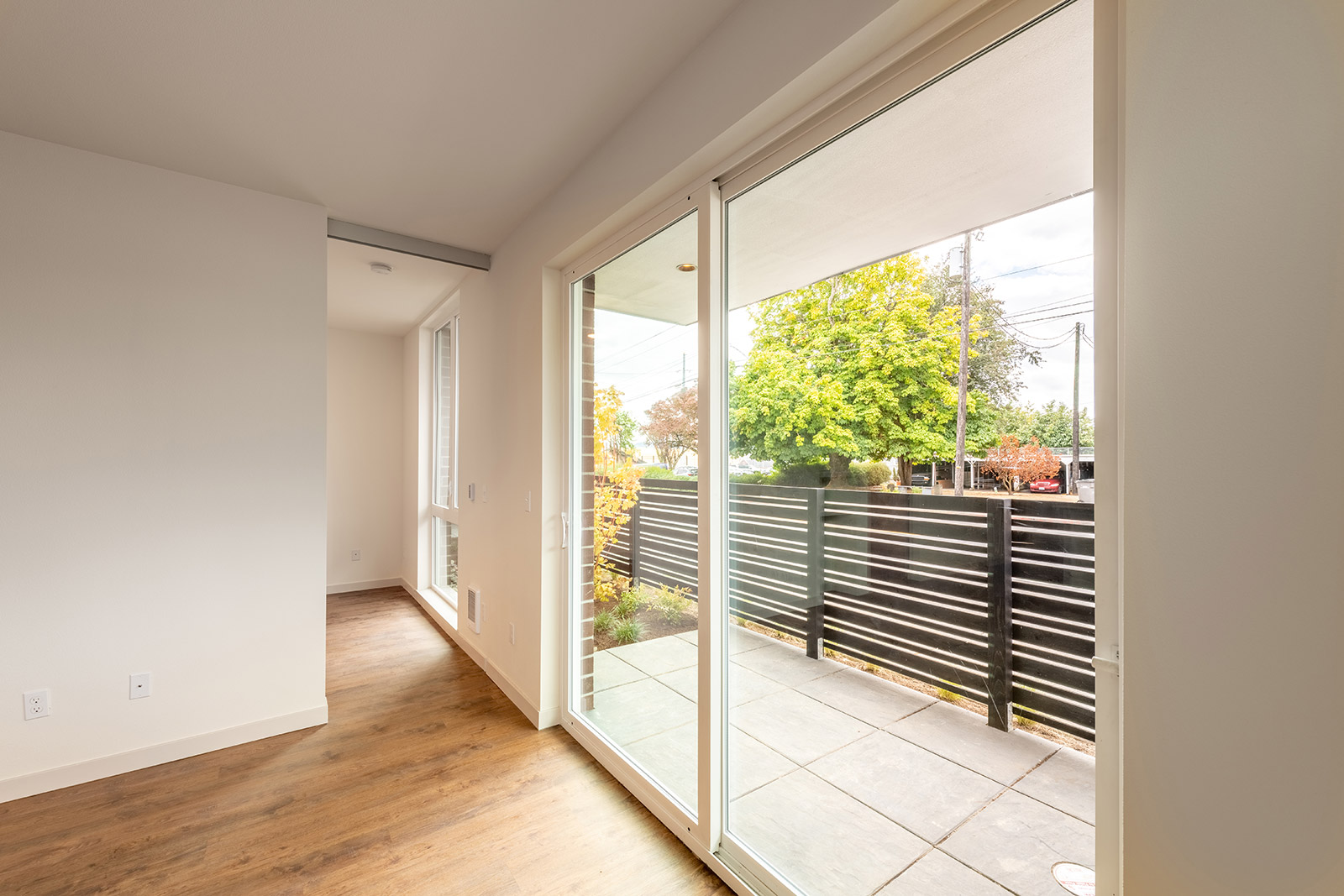
Think of terraces as outdoor rooms. Designed correctly, a terrace can be a very functional outdoor room when the weather is decent. The openness between inside and outside allows interior spaces to function differently and become more inspiring, while the flow of fresh air is an amenity in and of itself. Even throughout the gray, drizzly months here in the Pacific Northwest, an outdoor room can provide a pleasant backdrop. From a marketing and rental perspective, staging these outdoor areas properly, and showing their full lifestyle potential, goes a long way in terms of leasing units and determining optimal rents.
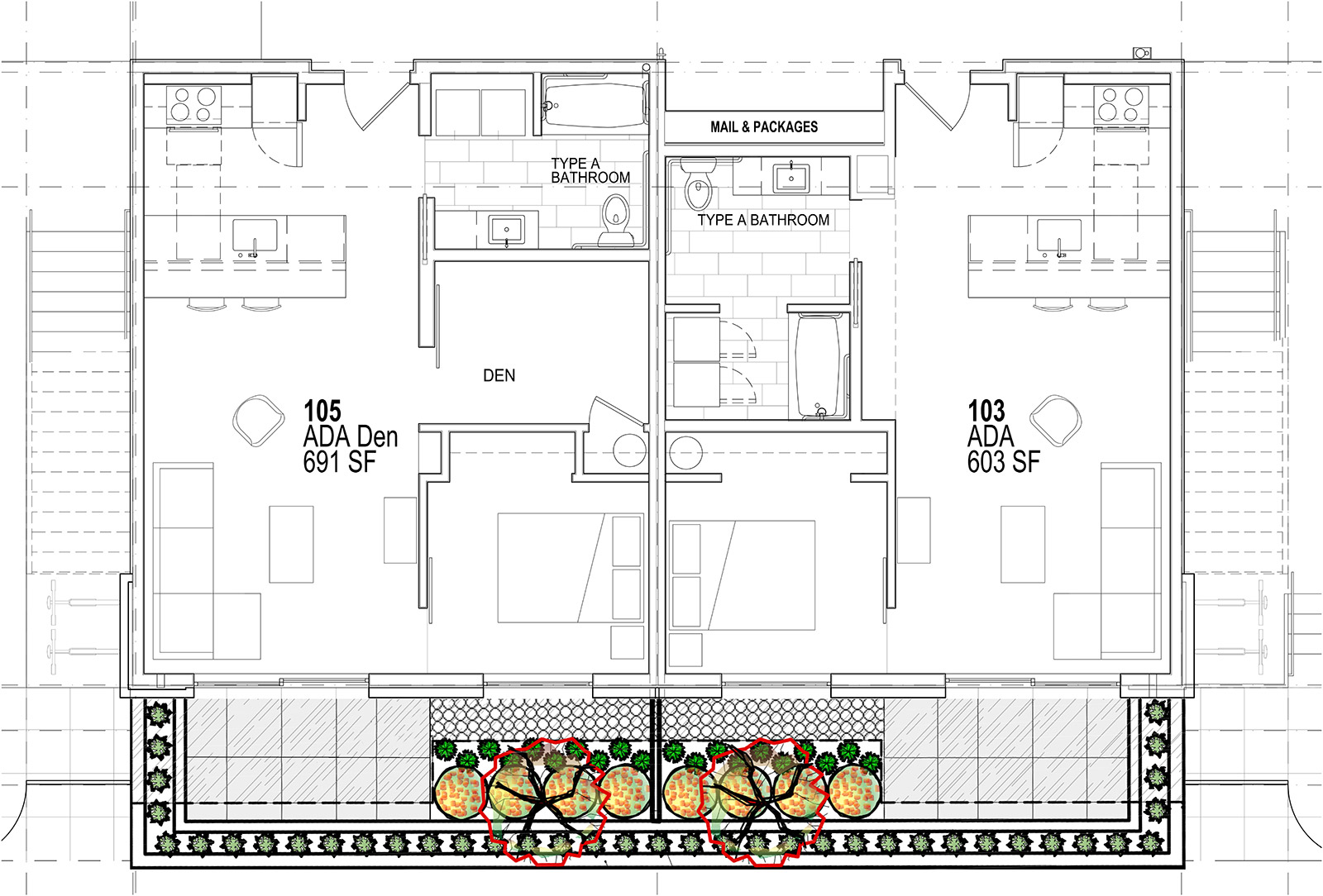
[Landscape design and drawing by ERLA]
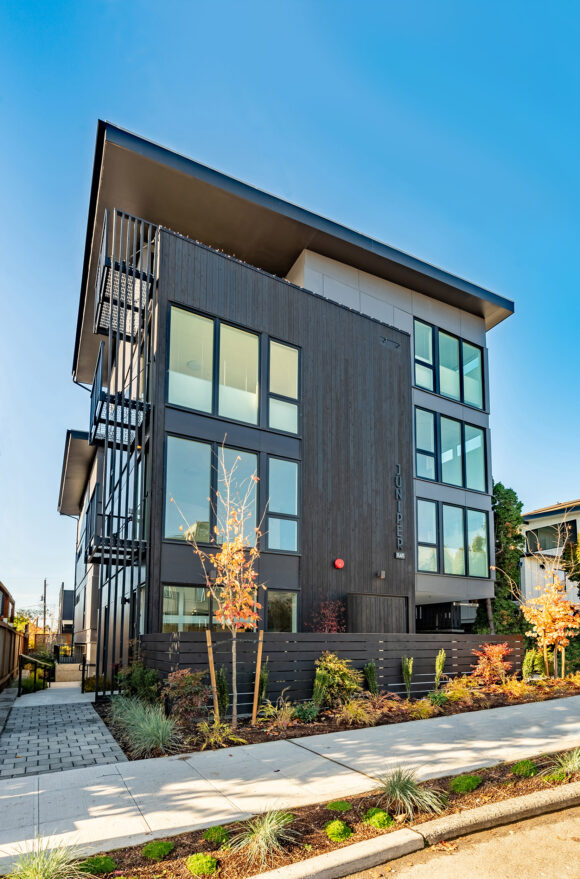 Gardens are useful and marketable. Planted with the right design decisions around trees and vegetation, an outdoor room can also provide ample privacy from adjacent spaces. Additionally, the inclusion of just a small amount of garden space allows for edibles and/or an herb garden. Even three or four square-feet of dirt or planter boxes is enough space to grow a handful of useful herbs.
Gardens are useful and marketable. Planted with the right design decisions around trees and vegetation, an outdoor room can also provide ample privacy from adjacent spaces. Additionally, the inclusion of just a small amount of garden space allows for edibles and/or an herb garden. Even three or four square-feet of dirt or planter boxes is enough space to grow a handful of useful herbs.
Garden units establish the landscape plan. When collected together, a number of these garden units create a significant bulk of the landscape plan for a building. This enhances the building, softens the edges, and brings a healthy, natural aesthetic to the project.
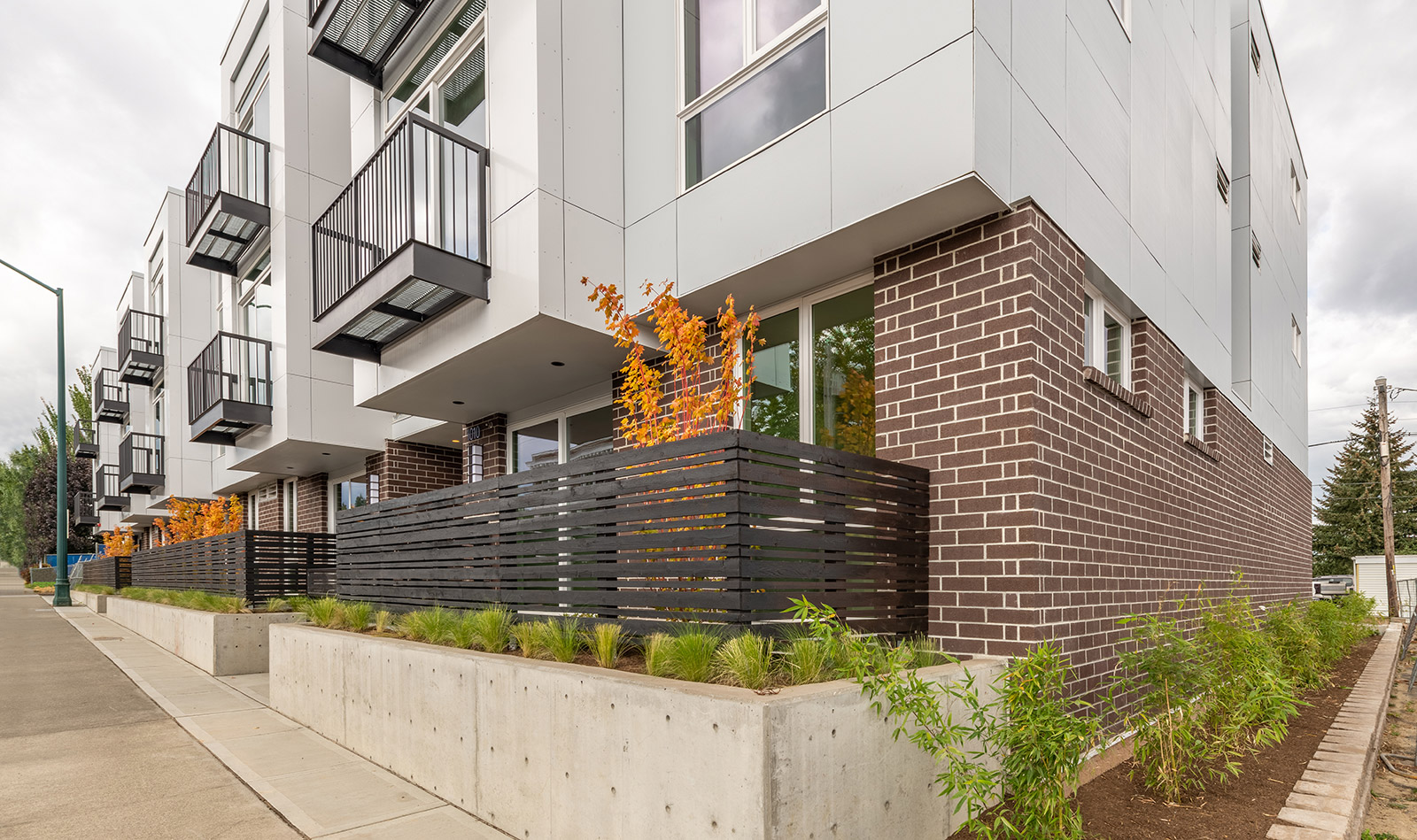
Eliminating the elevator simplifies the budget and the project. Elevators are expensive, difficult to maintain, take up a surprising amount of space in a floorplan, and have lead times measured in years. Once the well-crafted accessible units have been designed into the ground floor plan, the elevator can be eliminated from small projects that meet the right criteria. This removes an entire line-item from the construction budget—and an expensive one at that, with elevators costing about $30K+ per floor. It also reigns in maintenance costs in the years and decades to come. It’s worth mentioning that elevator technicians charge double for work performed on Sundays and holidays, which can very easily add up to $500 per hour. On top of the cost savings, the elimination of an elevator makes for simpler buildings. There are other little benefits, too, like the increase in fitness when taking the stairs a few times per day.

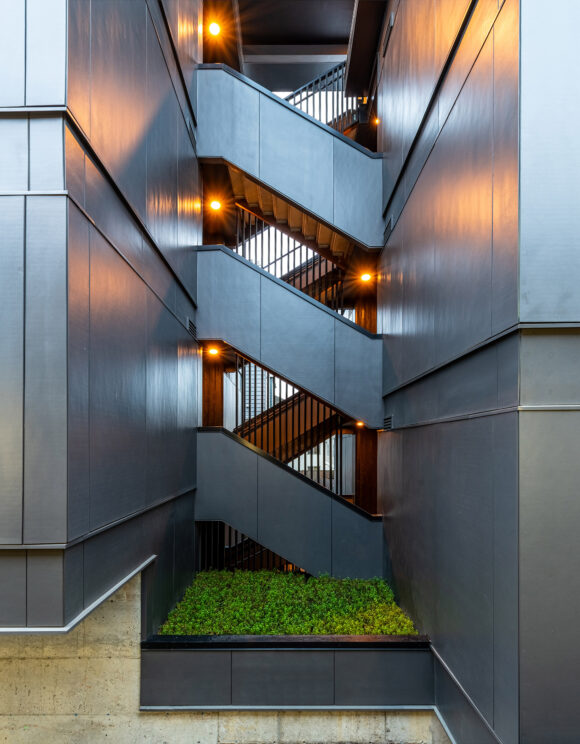 Stairs as design feature. Stairways in multi-family buildings are all too often designed like utility spaces, ignored in the overall design concept, and tucked into remote parts of the building. When considered as the primary means of vertical circulation, and included in the design thinking from the very start, stairs can become a design feature of the project. Screening around the stairs can become a prominent texture of the building’s envelope, as in the 1010 Burwell Flats (above), while also offering views from the elevated landings. The exterior but covered stair of Juniper Flats (left) plays up the geometry, while including a garden pocket.
Stairs as design feature. Stairways in multi-family buildings are all too often designed like utility spaces, ignored in the overall design concept, and tucked into remote parts of the building. When considered as the primary means of vertical circulation, and included in the design thinking from the very start, stairs can become a design feature of the project. Screening around the stairs can become a prominent texture of the building’s envelope, as in the 1010 Burwell Flats (above), while also offering views from the elevated landings. The exterior but covered stair of Juniper Flats (left) plays up the geometry, while including a garden pocket.
Mind the code. Eliminating an elevator from a project involves some code precautions that are worth stating. Without an elevator, it’s not possible to include a common rooftop terrace, as this space would not be accessible to all tenants. This also means that rooftop terraces cannot be added to the amenity area requirements that the City of Seattle demands for common area space. The maximum number of four units per floor, without an elevator and with a single stair, is also a primary driver of early design decisions that direct a large percentage of the floor plan.
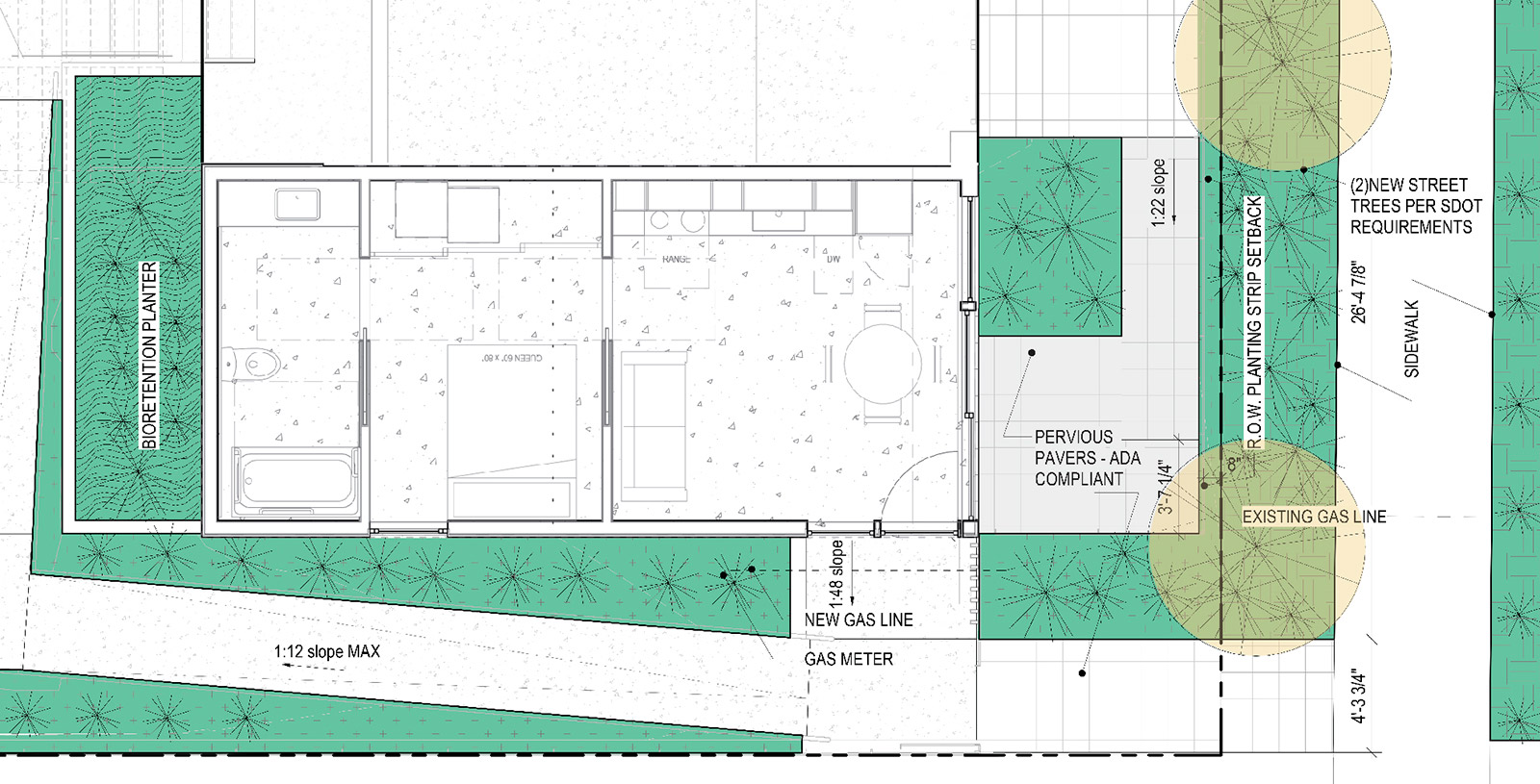
There are many other attributes offered by garden units and walk-up apartments, and also a handful of provisions to get ahead of, but these seven tend to most significantly guide the design of smaller, multi-family projects. When included early enough in the design process, and executed correctly in construction, our data indicates that rental value of a properly design garden unit can be 20-25% higher than units of the equivalent size and design, but without the ground floor adjacency to an outdoor terrace space. These value increases are significant enough to plan for early, and strategically design into a multi-family project.
Cheers from team BUILD





